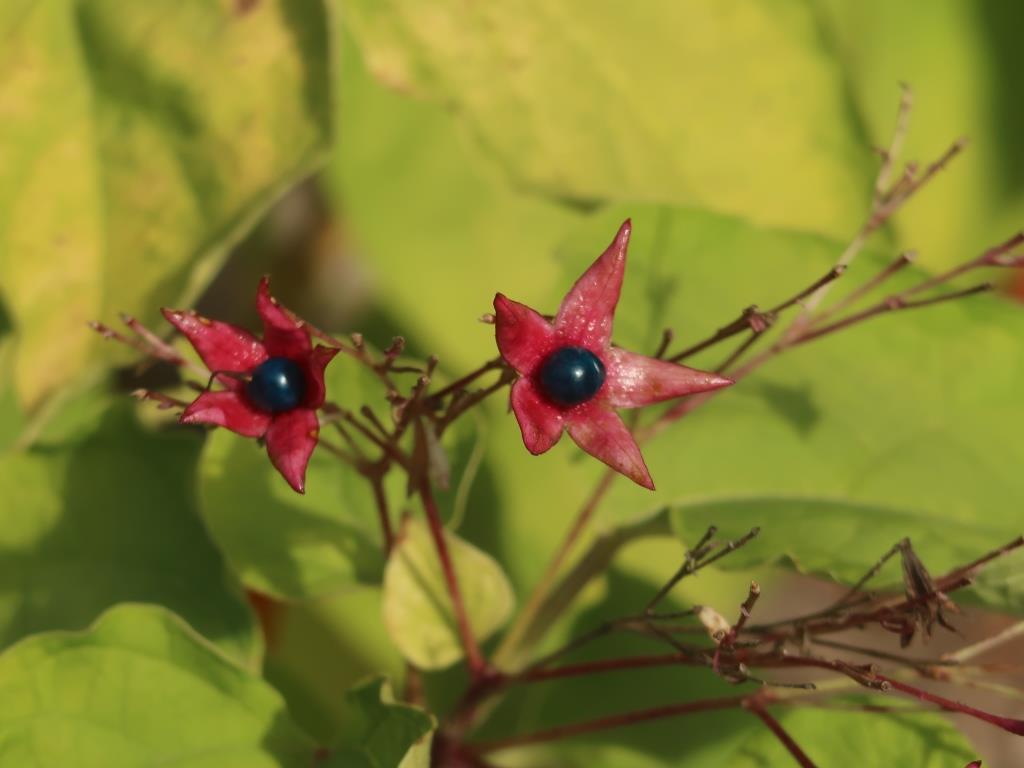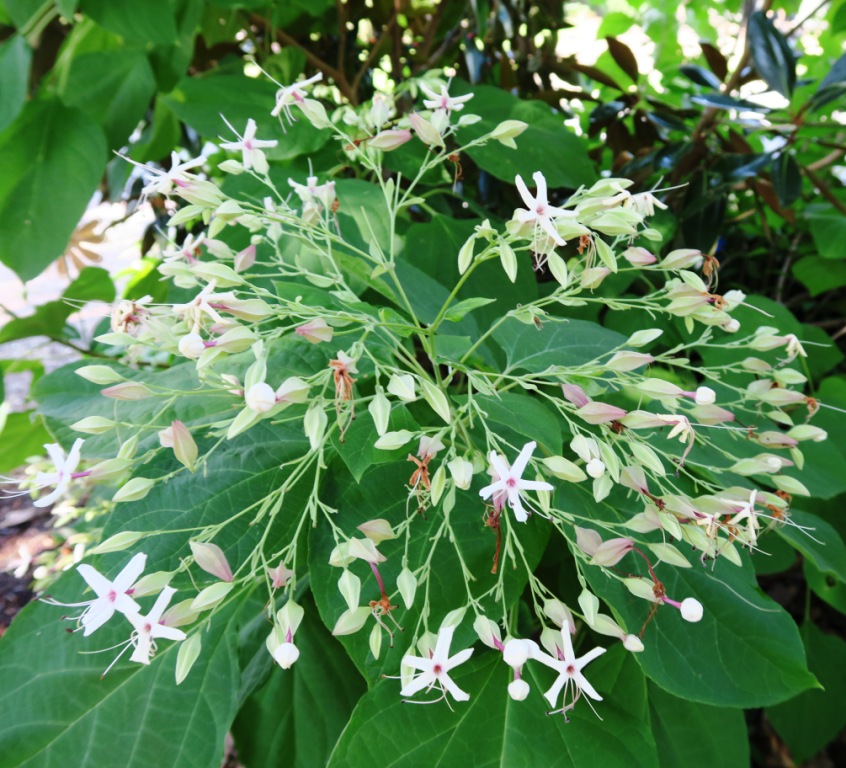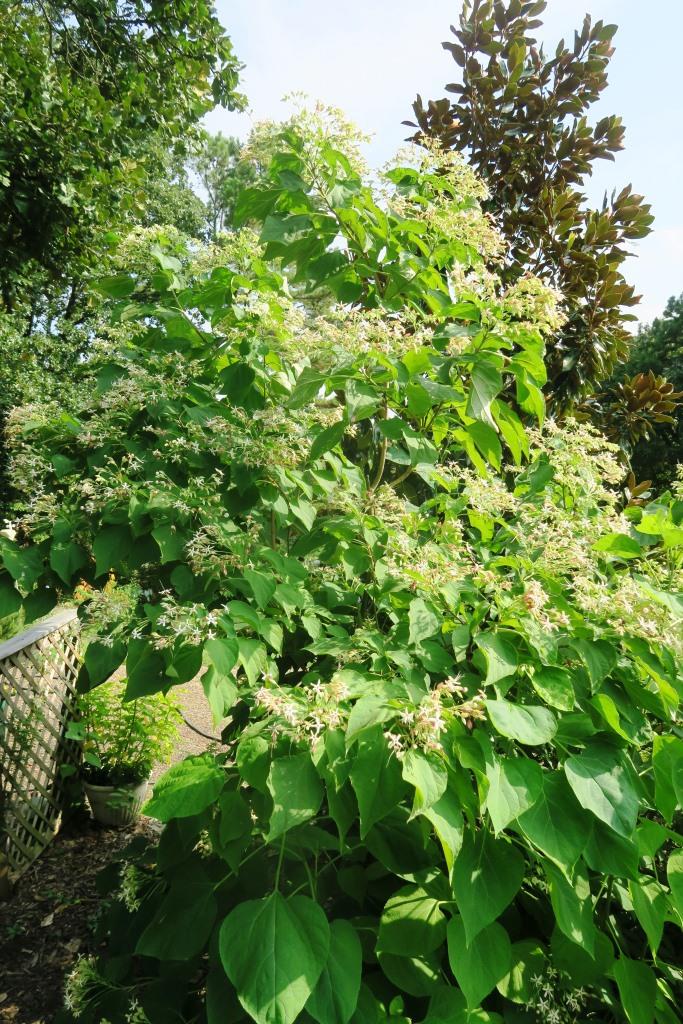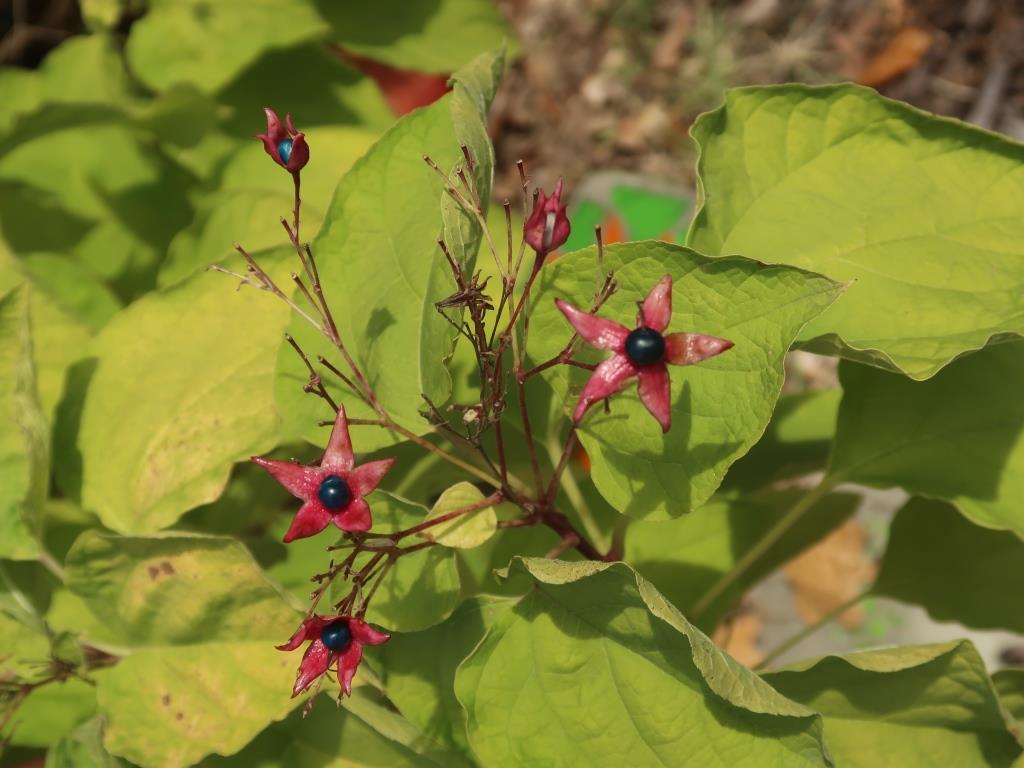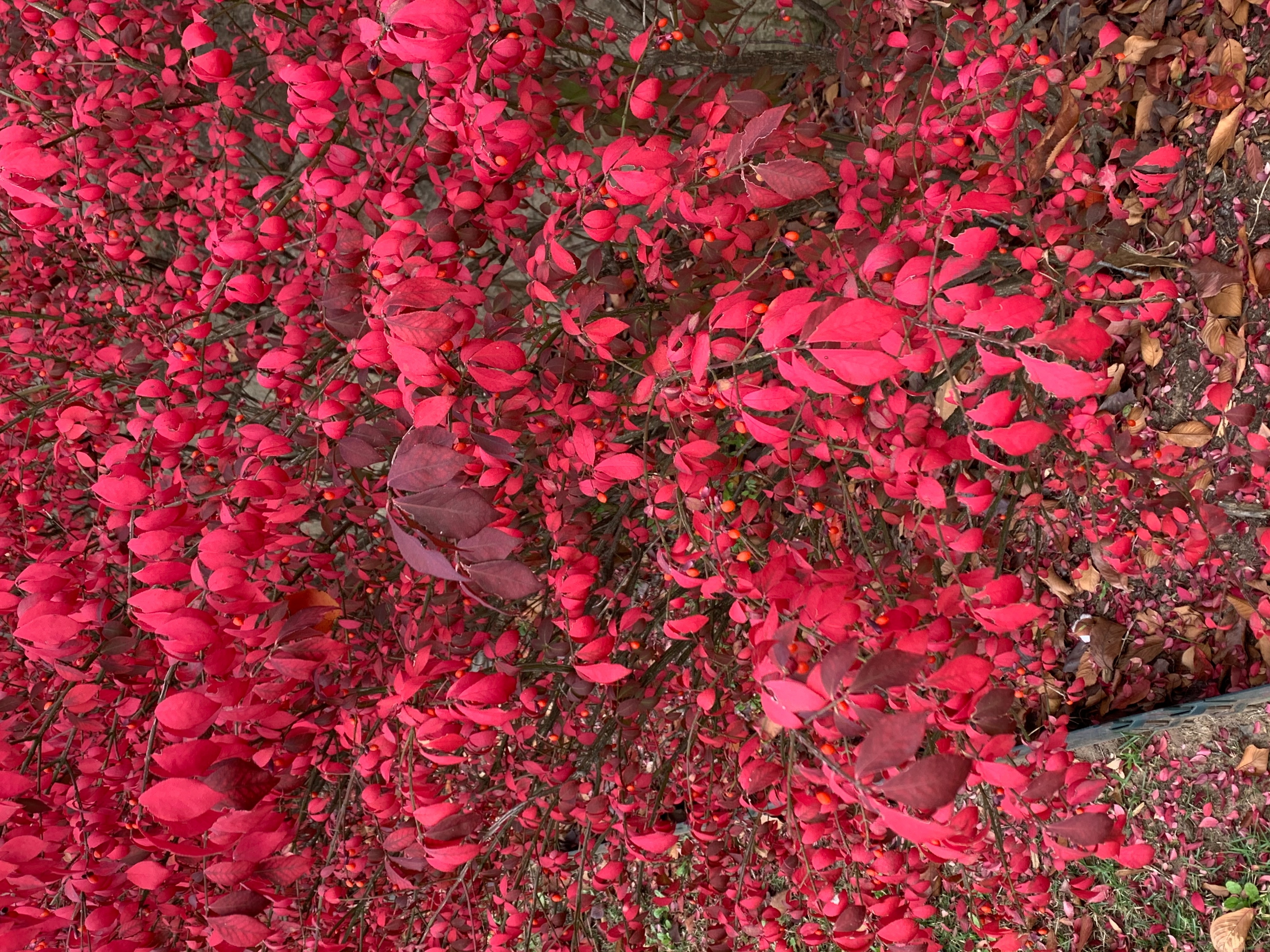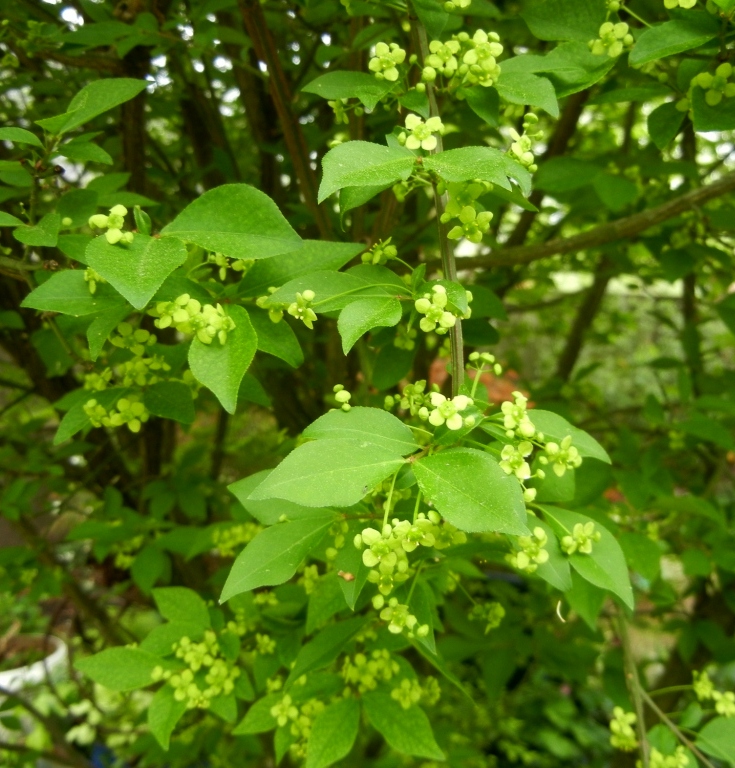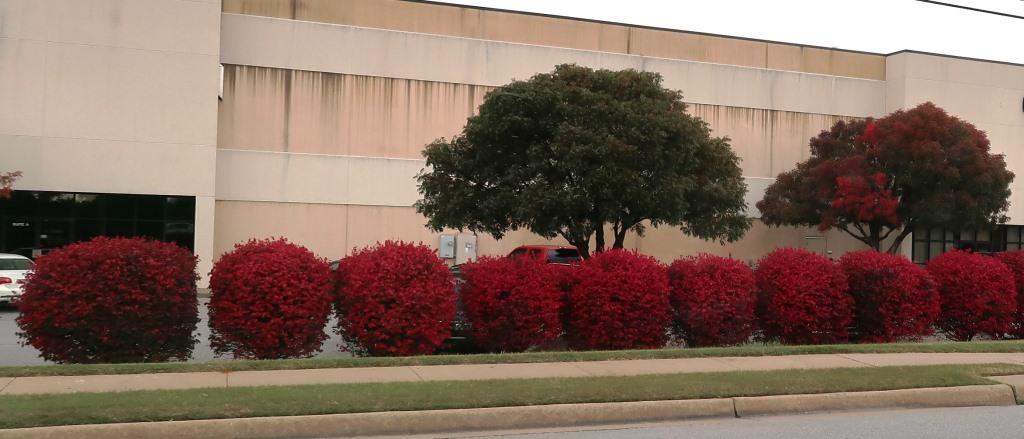Harlequin glorybower - Clerodendrum trichotomum is a large deciduous shrub/ small tree that has a tendency to take over a garden. I first fell in love with this plant on a garden tour to North Carolina many years ago. I saw the fruits, deep blue berries inside a red calyx on the fall form in a garden.
I had to have one. Friend Charlotte A. from El Dorado told me she had one and would gladly share—warning me that it could be invasive. Did I listen? No. I planted the six-inch rooted cutting probably 15 years ago (or more). It was in poor, rocky, pitifully unamended soil—my theory was this would limit its spread. It grew well the first few seasons with beautiful white fragrant flowers in the mid to late summer,
followed by these stunning fruits. I was in love. Flash forward to today and it is a more love/hate relationship. I have plants coming up 20 feet away from the original planting. I just keep cutting them back or pulling them out. The mother plant was 15 feet tall and 5 feet wide,
but last years deep freeze froze it back. Don’t worry, there are plenty more to take its place. I adore it in bloom, and with the fruit set—and this year it had stunning yellow fall foliage to go with the berries and calyx.
Would I recommend it for your garden—yes and no. If I had it to over again, I would find a large pot and containerize it. But I would still want it in my garden. Luckily the driveway and street limit it to only one part of my garden, and I can live with that. It does bloom best in full sun. It would not be considered winter hardy in the northern tier of the state.
Euonymus alatus, commonly called Burning Bush or Winged Euonymus
has been putting on a show this year. The deciduous bush is native to Japan and is not all that exciting during the growing season, but when fall rolls around, it is the star in the garden. It has small greenish white blooms in the summer, like many euonymus.
While it rarely spreads aggressively in central Arkansas, it is considered invasive in the Northeastern and eastern states. It does best in full sun, in well-drained soils. It will grow in the shade, but it will not color up well in the fall in the shade. The common name winged euonymus describes the extra corky “wings” or growths along the stem. There are standard and dwarf varieties.

